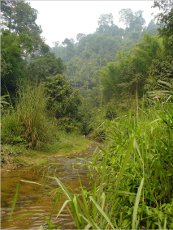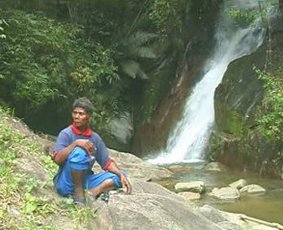Titiwangsa Range, Malaysia


This case study investigates landscape representation in the understudied and highly endangered Aslian languages, a branch of the Austroasiatic stock spoken in the Malay Peninsula, Southeast Asia. It targets four Aslian languages - Jahai, Menriq, Semnam and Temiar - all of which are spoken in and along the northern parts of the Titiwangsa Range, Peninsular Malaysia. These languages make up an interesting experimental setting: although they are closely related, they are spoken by communities displaying distinct subsistence systems and societal modes (band-based hunter-gatherers vs. tribal swiddeners) in varying environments (highland vs. lowland).
The territory is mostly made up of dense mountain rainforest, broken up by countless streams and waterfalls. Previous work on Jahai shows that landscape lexicon can be organized according to elaborate models which structure and connect a range of grammatical classes and semantic resources. Landscape nouns, motion verbs, property verbs, positionals, toponyms, deictics, body and kinship metaphor, and loanwords all take part in the same semantic engine. Understanding this system is crucial to unlocking a wealth of information of wider linguistic significance - from metaphorical mapping strategies to the syntactic status of compounds and noun phrases, from borrowing patterns to historical semantic change - not to mention the remarkable insights it provides into Jahai culture and everyday activity.
Researcher:Niclas Burenhult
